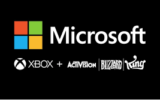While the Microsoft Windows Phone ambition is good and completely died at this time, there are times when the company plans follow-up to a cellular operating system that is bad luck. The follow-up is known internally as an OS Andromeda, and is being developed as an operating system for the surface duo. Unfortunately, Microsoft’s plan to create a Windows version for a double screen device has never seen daylight, but today we will see the internal build of Andromeda OS and what can happen.
That looks from Zac Bowden in Windows Central, which managed to get the Build of Andromeda OS and walked on Lumia 950. Although Andromeda OS was intended for the surface duo, Microsoft seemed to do internal testing on the Lumia 950 device, making it a solid choice for this direct.
In both writing and videos that you see embedded below, Bowden is very clear that this is not leaking from the ongoing cellular operating system. Andromeda OS is dead and not in active development, so there is no real hope to see a more complete feature version on Microsoft hardware at every point in the future. Even though it was truly gloomy, this was a good view of Microsoft’s progress made before finally deciding to send a surface duo with Android.
Although hands-on showed us a very rude-around-edge operating system and was rather clumsy, soon it was clear that Microsoft planned Andromeda OS with the ability of ink in the middle. For example, a lock screen doubling the ink space, allowing users to write a quick note on it that survives until it is deleted or the lock screen is completely deleted.
In addition, unlocking the device takes you to a veranda screen that also functions as a journal. Like the lock screen, you can use this page to record, but you can also do things like pasta items from the clipboard or insert images for markup. Having a cellphone unlocked for what is basically an empty canvas, not a home screen full of application icons is an interesting idea and that you might never see on other devices.
Andromeda OS also features an initial menu that reminds Windows Phone, which means he has direct tiles that are familiar. Bowden also showed off various movement controls included in Andromeda OS, swiped from the left to call the start menu mentioned above and from the right to bring up cortana and notification. Shifting down pulling the control center, which will look familiar to those who currently use Windows 11.
We were also given a short demo of what was possible by Andromeda OS on the actual double screen device, but because the demo was also on the Lumia 950, we unfortunately did not get a full experience. However, it is interesting to see what might happen before Microsoft decided to get Andromeda OS entirely and switch to Android for the surface duo.
Although there is no chance we will see this project revived for Microsoft hardware in the future, there is always a possibility that some individual features can walk to the surface of the duo. Even then, it is probably the best to appreciate this as a latitude of the past than something that might notify Microsoft’s efforts in the future, because it is possible for those who missed Windows Phone and Windows 10 Mobile.












